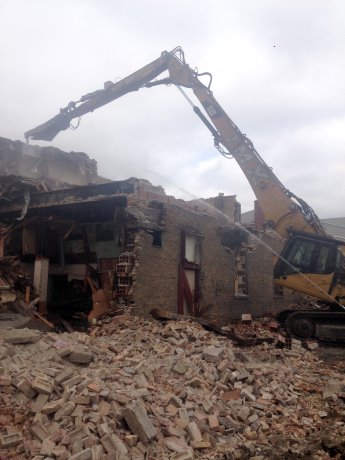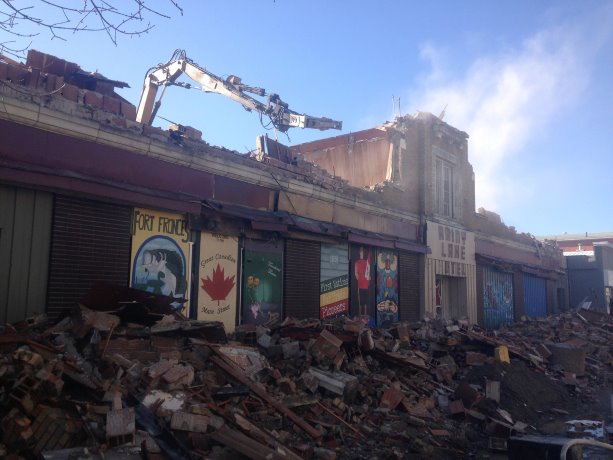Built in 1928, the Rainy Lake Hotel was once the go-to location for social occasions in the northern Ontario town of Fort Frances. However, following a legal dispute about 10 years ago, the premises was padlocked and never reopened. With no interested bidders on the derelict property, ownership eventually fell to the town.
"Without any sort of regular maintenance, time took its toll on the building," says Fort Frances’ chief building official Travis Rob. "Two of the foundation walls had already collapsed. Eventually, the best thing you could say about it was that the basement featured a 16-inch deep swimming pool in summer and an ice surface in winter."
The city recently tendered out demolition of the hotel, awarding the contract to JMX Contracting Inc. of Gormley, Ont. for a total value of just under $600,000. Pinchin Environmental was awarded the contract for quality assurance and quality control air monitoring during the demolition.
"When I took JMX co-owner Jeff Norton on a tour of the building, I neglected to point out to him that one of the unwanted visitors to the building had placed a very accurate life-sized dummy on one of the beds," says Rob. "That’s just the kind of building it had become."
Norton notes that, other than the occasional surprise left by interlopers, the building had been frozen in time on the day the doors were padlocked.
"Tables were still set for dinner and the dishwashers were still loaded with dishes and cutlery," he says.
While valuable salvage was limited, JMX removed the metal railings from the front of the building and delivered them to the local historical society. The town also specified the removal of two murals by noted Thunder Bay artist Helen Strickland.
"The building was made largely of masonry, brick and steel," says Norton. "It stood three storeys on a big footprint of about 12,000 square feet. The biggest challenge was to make sure that no debris landed on the adjacent buildings, which were all single-storey. We set up a brick deflection system to make sure the neighbours were protected."
Following minor asbestos abatement, full-out work began Oct. 5 when JMX deployed a Caterpillar 330 high-reach excavator to rip into the building, first taking out the lower back sections to provide additional work space. With that area backfilled, the excavator began to dismantle the building from the top down as the sidewalk in front of the building was temporalily closed.
With limited on-site storage space, the contractor maintained a steady stream of trucks delivering debris off site.
JMX handled its own dust suppression efforts using a misted water spray.
As the available work footprint grew, JMX brought in additional excavators.
Norton notes that he was alerted to the potential for a large local audience as the building was demolished.
"One of the people who settled in with a lawn chair told us he was a bellhop at the hotel in 1962," says Norton.
Timing was critical for local business owners who were concerned that demolition efforts might drive away Christmas shoppers.
Initial estimates indicated that the demolition and backfilling might take two months. Primary demolition and backfill was completed in just three weeks with road closure limited to a few days.
"We’re beyond pleased with how smoothly and efficiently this demolition project was completed," Rob says.
Plans for the site include the construction of a market square and farmers’ market that will attract visitors to the downtown core.












Recent Comments
comments for this post are closed